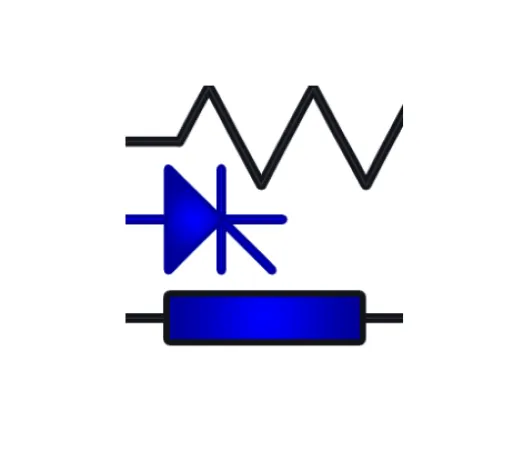13 Results for the search " lines":
Modular Multilevel Matrix Converter for Low-Frequency AC Transmission – modeling and Simulation in EMTP
Description:
Authors: Rafael Castillo-Sierra and Giri Venkataramanan
The transmission of power with AC faces limitations both to the stable operation of the electrical system and to the physical properties of... see more the transmission lines. Therefore, alternatives are being sought to mitigate these problems without the need to build new lines or replace existing ones with new, more powerful ones. In this context, a proven method makes it possible to overcome these problems by reducing the frequency at which power is transmitted. This method is known as Low Frequency AC Transmission (LFAC). In this sense, the model presented in this Research Contribution Prize Program EMTP® 2021 shows the implementation of a low-frequency transmission line in a small power system. The model presented shows a new block in EMTP of the AC/AC converter used, the Modular Multilevel Matrix Converter (MMMC) and the controls necessary for its operation. Time domain studies show that the technology is feasible and has the potential to improve the controllability and stability of transmission systems.
Tag(s): AC-AC power conversion, Electromagnetic Transient Studies in EMTP, Low frequency AC transmission, Modular Multilevel Matrix Converter
MIMO-OFDM Narrowband-PLC in Distribution Systems: Impact of Power Transformers on Achievable Data Rates
Description:
Power-line communication (PLC) is gaining a renewed interest, due to the smart grid (SG) emerging communication requirements. Among other communication technologies, PLC is a very efficient and feasib... see morele solution, especially for the extended SG distribution networks. However, it is very challenging to consider both the medium- and low-voltage parts of the distribution network as a whole communication medium, due to the attenuating effects of distribution transformers, limiting PLC applicability. In this paper, data transmission through distribution transformers is investigated by means of multiple-input multiple-output (MIMO) narrowband power-line communication (NB-PLC) system, utilizing orthogonal frequency-division multiplexing (OFDM) technology. Multi-conductor distribution line and measurement-based transformer models are developed to characterize the MV-LV PLC channel. In addition, OFDM signal processing techniques are applied to enhance the achievable data rates. The transmit power budget and bit allocation across the OFDM sub-channels of the spatial beams are optimized to maximize the data rate through the distribution transformer. The achievable data rates are calculated and systematically analysed for different scenarios to investigate the effects of the distribution lines, connected loads, noise models, etc. Results reveal the superiority of the proposed MIMO design against the traditional SISO systems. In addition, the possibility for an extensive and reliable application of MV-LV PLC communications through distribution transformers is shown.
Tag(s): Distribution lines, distribution transformers, MIMO-OFDM, power-line communication, smart grids
Content of the webinar studies from A to Z on TRV
Description:
Designs built or presented during the webinar of the series Studies from A to Z on Transient Recovery Voltage
Models built:
- Rating TRV envelop (IEC 62271-100 / C37.010 - 2011)
- CP / ... see moreFD lines
- Thevenin equivalent of a network
Tag(s): TRV, Transient recovery voltage, short-line fault, terminal fault, substation, 62271, 37.011, lines, switching, thevenin
Content of the webinar studies from A to Z on lightning strokes
Description:
Designs built or presented during the webinar of the series Studies from A to Z on Lightning stroke analysis.
Models built:
- Metal Oxide surge arrester (IEEE working group 3.4.11)
- To... see morewer model for fast-front transients.
- Footing resistance of towers (with ionization effect)
- air-gap leader (Area Criterion Model and equal area integration (Cigre))
- FD lines
- Substation equipment
- Parametric studies
- Corona
Tag(s): Lightning, stroke, fast-front transient, tower, arrester, cigre, line, substation, parametric, corona, air-gap, leader
Indirect-Lightning Performance of Overhead Distribution Networks With Complex Topology
Description:
The paper deals with the evaluation of the indirect-lightning performance of overhead distribution networks. The novelty of this contribution is that it takes into account the inherent complexity of d... see moreistribution networks. These networks are indeed characterized by a plurality of lines (main feeder and laterals) and also by the presence of typical power components (e.g., transformers and surge arresters); they consequently differ considerably from the straight line configuration generally adopted in this type of studies.
To accomplish such an evaluation we have extended the general procedure already presented in a previous paper based on the use of the LIOV code along with the Monte Carlo method. The extended procedure combines the advantage of the LIOV-EMTP computer code—that allows the calculation of lightning-induced voltages in complex distribution networks—with a heuristic technique specifically developed and integrated in the Monte Carlo routine in order to reduce the computational effort. The application of the proposed procedure to a set of distribution overhead networks characterized by different topologies, but all of the same length, shows that, in general, the usual single straight-line approach may result into a misestimation of the indirect-lightning performance. The paper also analyzes and discusses the influence of both the line terminations, and the position of the line poles.
Authors: Alberto Borghetti, Senior Member, IEEE, Carlo Alberto Nucci, Fellow, IEEE, and Mario Paolone, Member, IEEE
IEEE TRANSACTIONS ON POWER DELIVERY, VOL. 24, NO. 4, OCTOBER 2009
Tag(s): LIOV-EMTP, lightning-induced overvoltages, lightning performance, power quality, distribution systems, overhead power lines.
